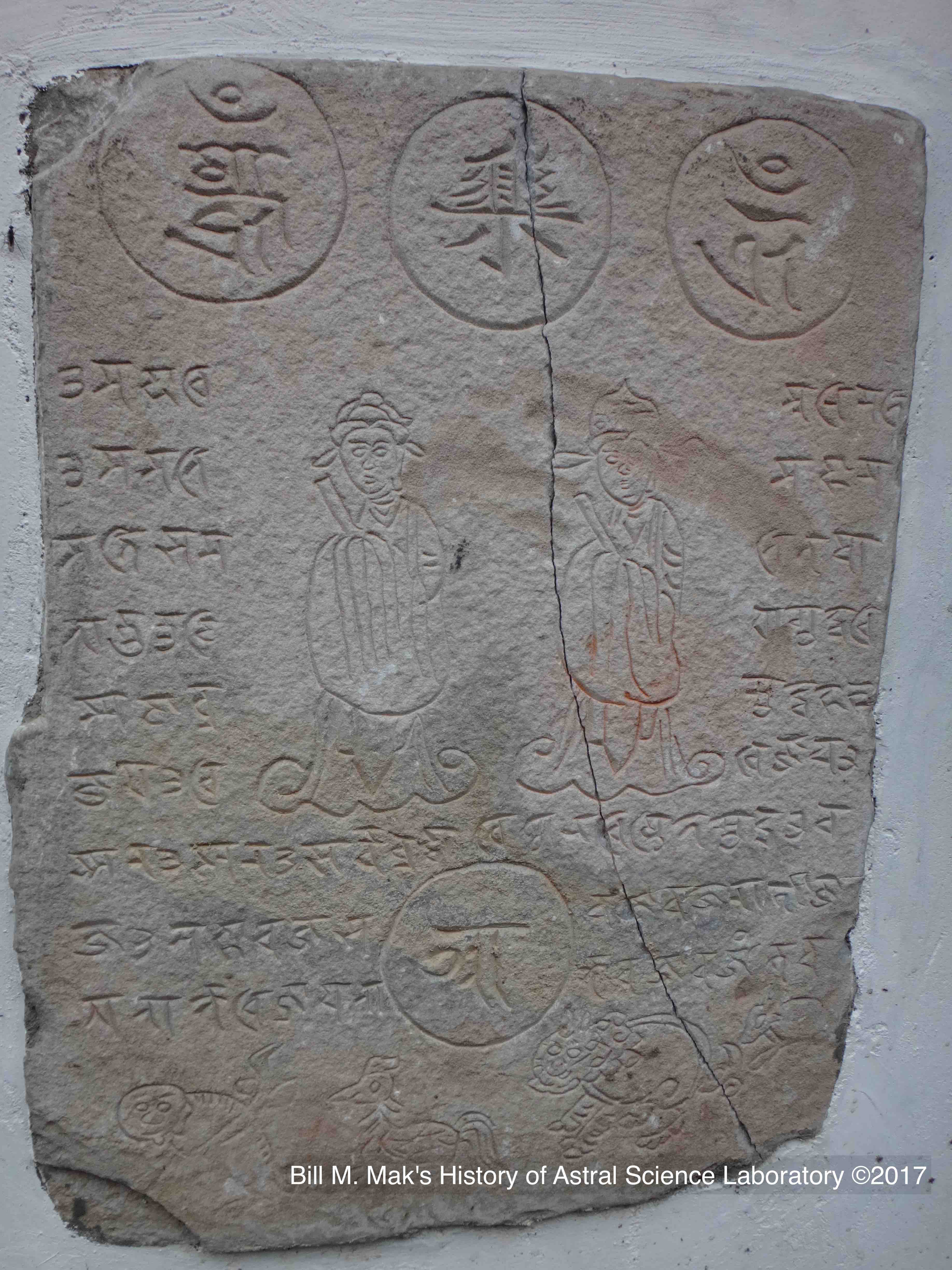The origin of the Chinese zodiac is unknown but the earliest examples from archeological finds are dated to around third century BCE. It comprises a series of twelve animals assigned to a cycle of twelve years. Unlike the Western zodiac, they are not associated with the stars. The twelve Chinese zodiac animals are however sometimes associated with the twelve “earthly branches” 地支, which are assigned in turn to the twelve directions starting from the north moving clockwise.
In a variety of esoteric Buddhist tombstones found in Yunnan (around 12th-14th century), the zodiac animals are depicted with a kind of cosmic significance. Together with esoteric Buddhist mantras such as the Uṣṇīṣvijayadhāraṇī and Sanskrit seed letters to represent a pantheon of astral deities, the zodiac represents a kind of spatial totality not unlike its Indian counterpart, the dikpāla-s or the direction guardians which are often depicted also as a series.
The sample below contains three zodiac animals at the bottom: Monkey, Rooster and Dog. The Rooster is represented by the earthly branch 酉 which is associated with the direction west.
The traditional Chinese calendar is luni-solar. In other words, the dates are determined by both lunar and solar factors. In the case of the Chinese new year, it is set at the beginning of the month which contains the day where the Sun is at 330 degree, or about one month before Spring Equinox. The beginning of the month is usually close to the New Moon. In the case of 2017, the New Moon falls on Jan 27 but the Chinese New Year begins on Jan 28.
Happy Chinese New Year of Rooster.
More on the Yunnanese esoteric Buddhist tombstones (in French):
http://www.billmak.com/wp-content/uploads/2016/05/LLB_med.jpg

